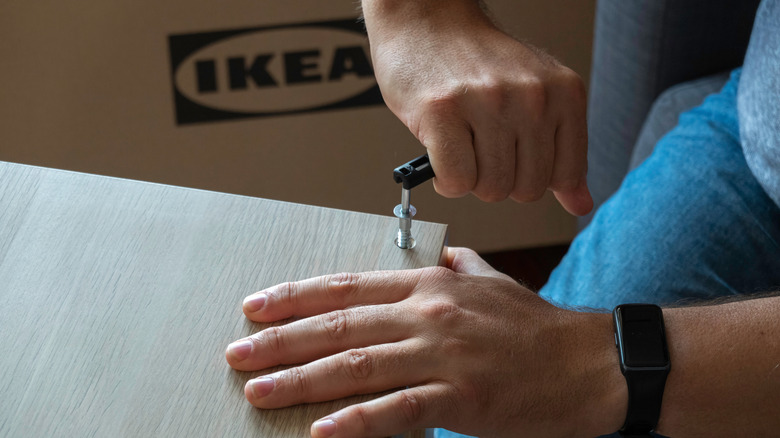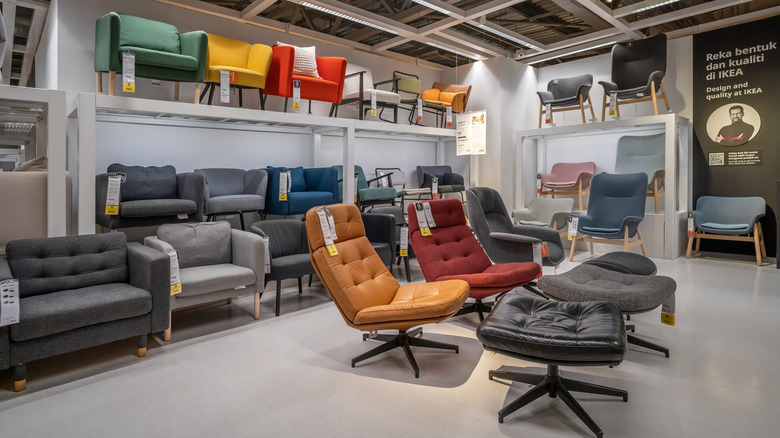The IKEA Effect: Why You Secretly Love Assembling Your Own Furniture
If we told you that there was a thing called the IKEA effect, you might think it's related to strange phenomena like shouting at unassembled furniture or the ability to escape mazes by following the scent of Swedish meatballs. We've all been there. But, in reality, the effect is about what's described in a Journal of Consumer Psychology paper as "the increase in valuation of self-made products." If that sounds underwhelming and maybe a bit predictable, consider the specifics: people think that IKEA storage boxes and Lego toys they personally assembled are more valuable than identical, pre-assembled ones. No word about the perceived value of the IKEA favorite release, the BYGGLEK Lego brick set. Does simultaneous IKEA and Lego double the value? Probably not, but it gets even a little weirder than that.
The research found that the effect occurs independent of related phenomena like the endowment effect, which says people tend to overvalue things they own whether they made them or not. Unsuccessful building and disassembly do not increase the assembler's valuation, and the assembler's self-identification as a "do-it-yourselfer" doesn't alter the effect.
No, it really appears that we simply like the things we put together a little more than things we didn't. And while this paper doesn't go into a lot more depth than that, there are some useful ways we can interpret this finding. But we must take care not to let research like this convince us that we're behaving irrationally when we secretly love building furniture from scratch. If anything, the opposite is true.
What the IKEA effect might mean for you
By participating in their creation, we increase the value of things without having to pay more for them. That means we might be happier in homes that we outfit with our own creations, compared to identical products we didn't assemble. That doesn't mean that you'll always prefer DIY IKEA projects over anything else, because for some, furnishings have major effects on social comparison and competition with our peers. (Of course, even the most refined tastes sometimes make room for vintage IKEA pieces that are now collectors' items.)
Another implication of the IKEA effect is that you'll presumably get better value when buying used furniture by buying items that haven't been assembled, and perhaps even avoiding IKEA furniture that's been refinished or painted by the current owner (since those owners will tend to overcharge, from your point of view). But while the paper's authors refer to this effect on perceived value as "overvaluation," that's up for debate. If the product is cheaper because it's not pre-assembled, why shouldn't it be more expensive because it has been assembled? The existence of IKEA assembly services like Taskrabbit means that putting furniture together has value.
Rather than an irrational over-valuing of your own work, the IKEA effect could as easily be undervaluation by the buyer who doesn't acknowledge the value of the assembly labor. Either way, that may be why you love to build IKEA furniture. Labor makes you feel a sense of pride. If you prefer your work to the identical work of others, that's okay. You did a great job, and never threw a single hex wrench in anger!

